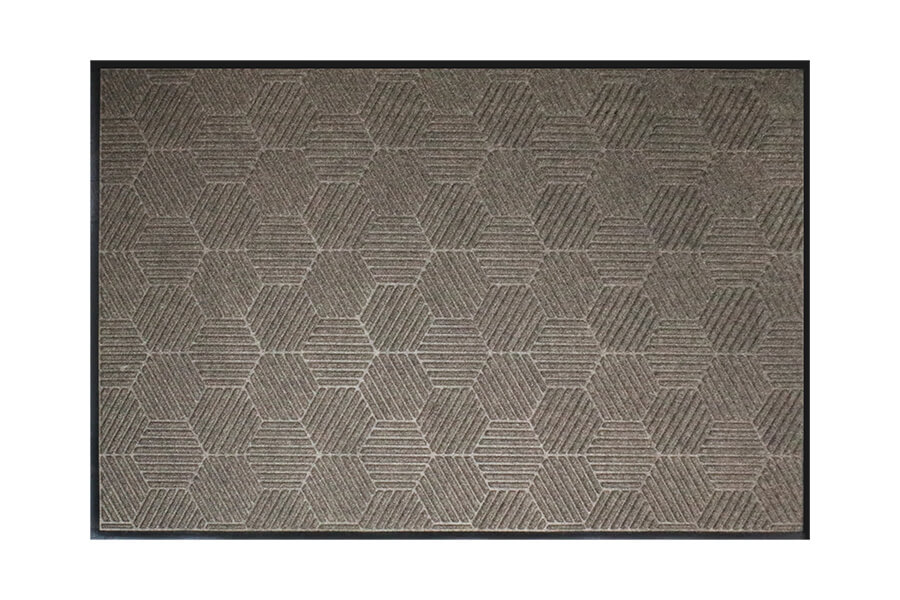
Do WaterHog Mats Get Moldy?
WaterHog mats are a popular choice for residential and commercial spaces, known for their durability and effectiveness in trapping dirt and moisture. However, a common question arises regarding their susceptibility to mold and mildew, especially in humid conditions.
In this article, you will learn:
- The inherent mold and mildew resistance of WaterHog mats.
- Essential tips for cleaning and maintaining your WaterHog mats to prevent mold.
- Practical solutions to address and avoid issues of mold in these mats.
Let’s dive into the details.
What Are WaterHog Mats?
WaterHog mats are renowned for their robustness and efficiency in trapping dirt, debris, and moisture, making them a top choice for entryways, high-traffic areas, and even industrial settings.
These mats feature a bi-level surface that removes particles from shoes, while their water dam border prevents spills and slips.
The functionality of WaterHog mats relies heavily on the materials used. Typically, they are made from a durable PET or anti-static polypropylene fiber that dries quickly and resists fading and rotting.
The backing is usually made from rubber, providing stability and further resistance to harsh conditions. The combination of these materials enhances the mat’s durability and contributes to its mold and mildew resistance.
WaterHog mats are not just practical; they come in various designs, sizes, and colors, making them a versatile option for any setting. Whether in a corporate office, a busy household, or an industrial area, these mats serve both aesthetic and functional purposes.
Do WaterHog Mats Get Moldy?
WaterHog mats are designed to resist mold, and when correctly maintained, mold is unlikely.
Mold and Mildew: Understanding the Risks
Mold and mildew are types of fungi that thrive in moist, warm environments. They are unsightly and can also cause unpleasant odors and potentially lead to health issues, especially in individuals with allergies or respiratory problems.
Understanding the conditions that promote their growth is crucial in preventing their occurrence in your home or office.
Mold spores are present almost everywhere, both indoors and outdoors. They can begin to grow on a surface when they find the right combination of moisture, warmth, and organic material to feed on. This is why areas with high humidity levels or prone to water spills are often at risk for mold and mildew growth.
Mildew, a specific type of mold, generally refers to a flat growth that appears powdery or fluffy. It commonly grows on damp surfaces, organic materials like wood or paper, and textiles, including carpeting and mats. Mildew can start in small spots and rapidly spread over larger areas if it is not addressed.
In the context of WaterHog mats, understanding these risks is vital. While these mats are designed to trap moisture, proper maintenance is essential to ensure that this functionality does not inadvertently create an environment conducive to mold or mildew growth.
WaterHog Mats and Mold Resistance
WaterHog mats are engineered with mold and mildew resistance in mind. This resistance is largely attributed to the materials used in their construction. The PET or polypropylene fiber used in the surface layer is inherently resistant to moisture absorption, which is a crucial factor in preventing mold growth. This material does not provide a conducive environment for mold spores to thrive, as it dries quickly and doesn’t retain moisture.
The design of WaterHog mats also plays a significant role in their mold resistance. The bi-level surface pattern effectively traps dirt and moisture, while the raised “water dam” border contains the moisture, preventing it from seeping underneath the mat. Importantly, these design features facilitate the evaporation of trapped moisture, a key factor in preventing mold and mildew formation.
Another factor contributing to the mold resistance of WaterHog mats is their backing, which is made of rubber. Rubber is not only durable and slip-resistant but also does not support mold growth, further enhancing the overall mold resistance of the mat.
However, while WaterHog mats are designed to resist mold, proper maintenance is still essential to ensure their longevity and hygiene. In the next section, we’ll provide detailed maintenance tips to keep your WaterHog mats mold-free and in top condition.
Maintenance Tips to Prevent Mold in WaterHog Mats
Proper care and maintenance are key to ensuring that your WaterHog mats remain mold-free. Here are some essential tips to help you maintain your mats effectively:
- Regular Cleaning: Vacuum the WaterHog mats regularly to remove dirt and debris. For deeper cleaning, use a carpet cleaner or a mild detergent mixed with water. It’s important to remove any soil or organic material that could potentially feed mold growth.
- Proper Drying: After cleaning, make sure the mat is thoroughly dried. Hang the mat in a well-ventilated area or use fans to speed up the drying process. Avoid laying the mat back down while it’s still damp, as the moisture can create an ideal environment for mold growth.
- Spot Cleaning for Spills: In case of spills, clean the area promptly. Use a clean cloth or sponge to blot the spill, then clean the spot with a mild detergent solution. Rinse the area with clean water and dry it thoroughly.
- Avoid High-Moisture Areas: If possible, avoid placing WaterHog mats in areas with excessive moisture or prone to water leaks. If this is unavoidable, be extra vigilant with cleaning and drying in these areas.
- Regular Inspection: Periodically check your WaterHog mats for signs of mold or mildew, especially underneath and along the edges. Early detection can prevent the spread and make cleaning more manageable.
By following these maintenance tips, you can significantly reduce the risk of mold and mildew development in your WaterHog mats, ensuring they remain a healthy and effective part of your space.
In the next section, we’ll explore what to do if your WaterHog mat does get moldy and how you can address this issue effectively.
What to Do If Your WaterHog Mat Gets Moldy
Even with the best care, mold and mildew can sometimes find their way onto WaterHog mats. If you discover mold on your mat, it’s important to address it promptly to prevent further spread and potential health risks. Here are steps to effectively remove mold from your WaterHog mat:
Step – 1. Take the Mat Outside: To prevent mold spores from spreading indoors, take the mat outside for cleaning.
Step – 2. Brush Off Loose Mold: Using a stiff brush, gently scrub off any loose mold spores from the mat. Doing this outdoors prevents the spores from dispersing into your indoor environment.
Step – 3. Prepare a Cleaning Solution: Mix a solution of water and a mild detergent, or use a mixture of water and white vinegar for a natural alternative. Avoid using bleach, as it can damage the mat’s fibers.
Step – 4. Clean the Mat: Apply the cleaning solution to the moldy areas and scrub gently with a brush. Make sure to cover all affected areas thoroughly.
Step – 5. Rinse Thoroughly: After scrubbing, rinse the mat with clean water to remove any remaining mold and cleaning solution.
Step – 6. Dry the Mat Completely: It’s crucial to dry the mat thoroughly before bringing it back inside. Hang it in a well-ventilated area or in direct sunlight, which can help kill any remaining mold spores.
Step – 7. Prevent Future Growth: Once the mat is clean and dry, consider using a mold-resistant spray as an additional preventive measure.
If the mold problem is severe or if you’re dealing with persistent issues, it might be worth consulting a professional cleaner for more advanced solutions.
Conclusion
In this article, we explored the critical question: Do WaterHog mats get moldy?
We’ve learned that while WaterHog mats are designed with mold and mildew resistance in mind, proper care and maintenance are essential to keep them in top condition. To recap, here are the key takeaways:
- Inherent Mold Resistance: WaterHog mats are made with materials and a design that naturally resist mold and mildew growth.
- Essential Maintenance Tips: Regular cleaning, proper drying, and avoiding high-moisture areas are crucial to prevent mold in WaterHog mats.
- Effective Mold Solutions: In case your mat gets moldy, we’ve discussed practical steps for cleaning and preventing future mold growth.
Maintaining your WaterHog mats doesn’t just contribute to their longevity but also ensures a healthier environment in your home or workspace. As a next step, you might be interested in exploring our guide on “Choosing the Right WaterHog Mat for Different Environments,” which can help you select the best mat for your specific needs while keeping maintenance and durability in mind.
WaterHog mats are a practical and durable solution for keeping spaces clean and safe, and with the right care, they can remain an effective barrier against dirt, moisture, and even mold for years to come.
Frequently Asked Questions (FAQs)
What makes WaterHog mats different from regular doormats?
WaterHog mats stand out compared to regular doormats due to their raised, bi-level design, which scrapes dirt from shoes and traps water underneath. The mat designed for high durability comes in attractive colors that complement home or business entrances better than an ordinary floor mat.
Are WaterHog mats good for trapping dirt and moisture?
Yes. They are excellent at keeping entryways clean. Each WaterHog mat utilizes sturdy fibers and a “water dam” border to keep soil and moisture contained on the surface, ensuring floors remain clean and dry, even in high-traffic areas.
Do WaterHog doormats work well in high-traffic entryways?
Yes. WaterHog doormats are designed for busy areas with constant heavy foot traffic. A WaterHog floor mat is a mat designed to stay in place, resist crushing, and continue trapping dirt even after extensive use, often making it the only mat many facilities rely on.
Are WaterHog mats suitable for both indoor and outdoor use?
Yes, these mats are suitable for both indoor and outdoor use. A WaterHog doormat dries quickly, resists fading, and withstands sunlight and even cold weather. Whether at an office lobby or on a front porch, this is a mat designed to work well in all environments.
What materials are used to make WaterHog mats?
A WaterHog mat is crafted with solution-dyed PET fibers and a durable rubber backing. This durable design helps WaterHog doormats remain flexible, slip-resistant, and long-lasting. Made with eco-friendly recycled materials and available in many attractive colors, they are suitable for both indoor and outdoor use.
